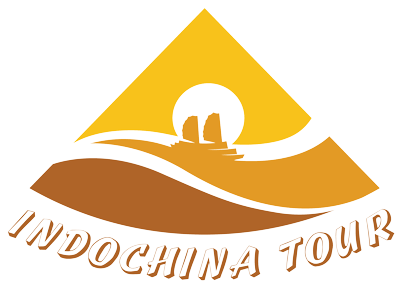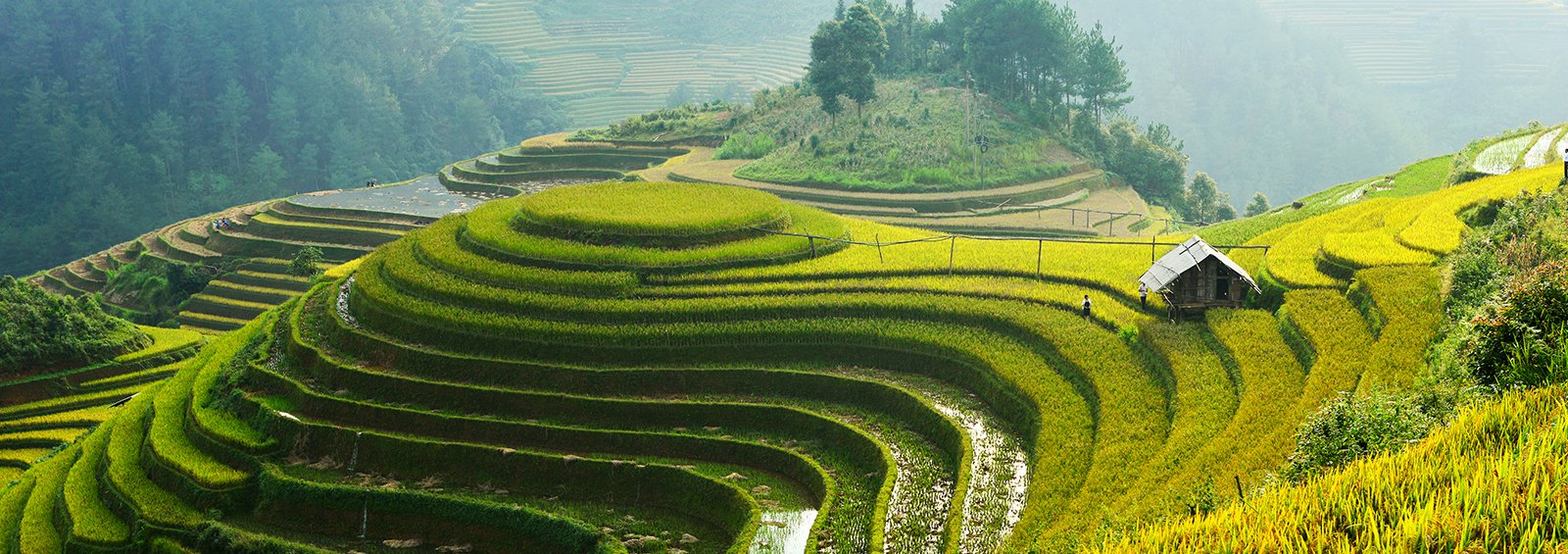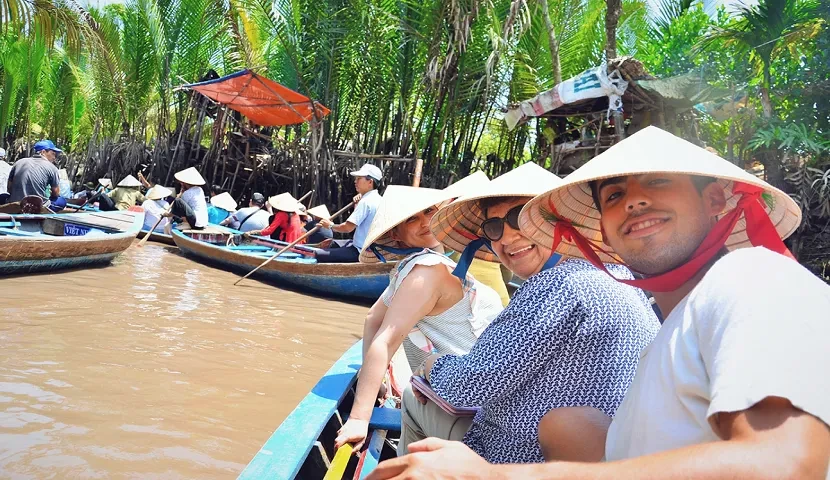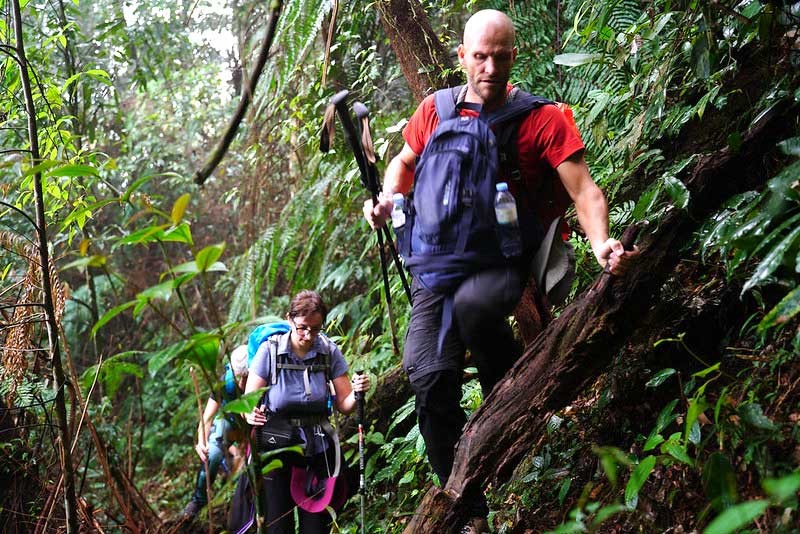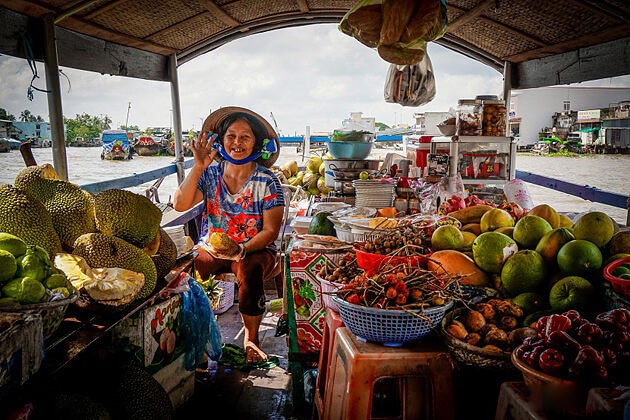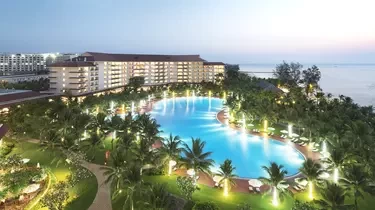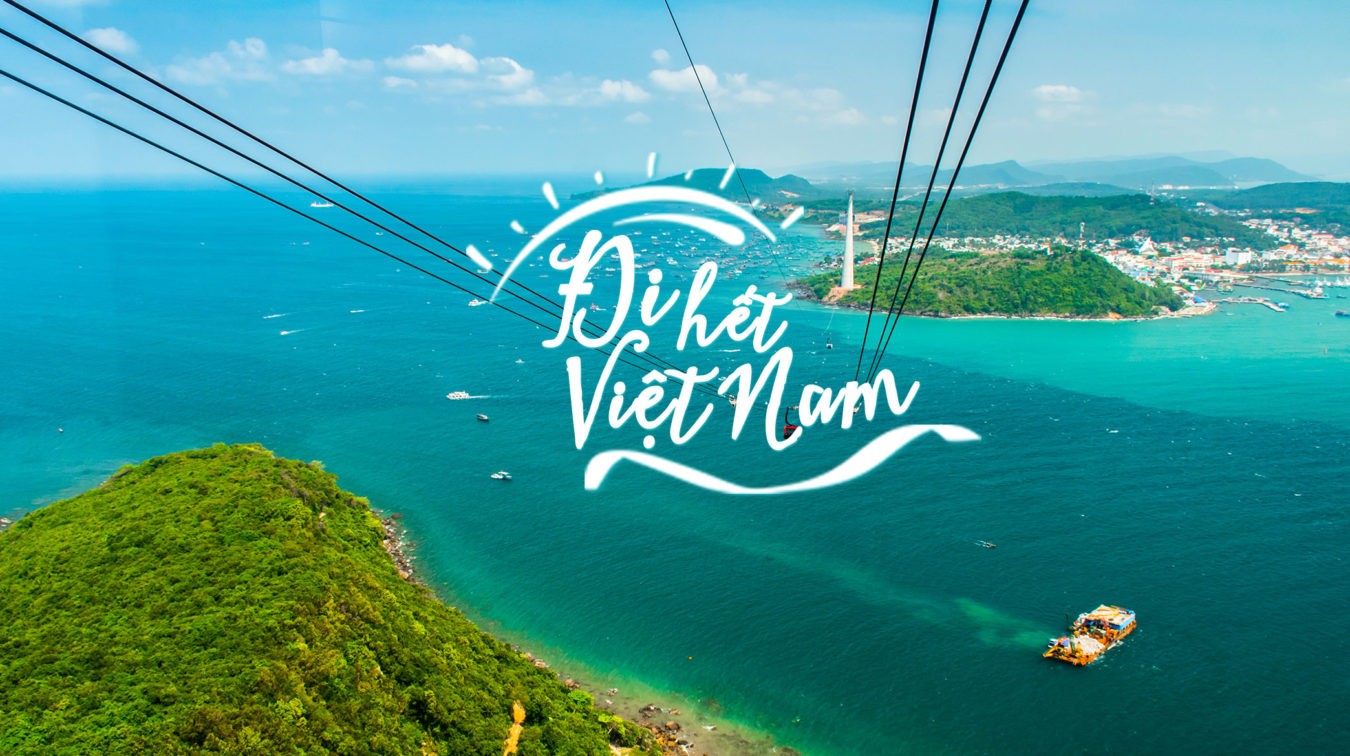How to Plan a Trip to Vietnam? Insider Tips for an Authentic Experience?
An Overview for First-Time Travelers
Planning your first trip to Vietnam? Get ready to be enchanted by a country filled with timeless beauty, stunning scenery, and a vibrant cultural heritage. Before you dive into your adventure, let's go over the essentials to ensure a smooth and memorable journey.
Understanding Vietnam’s Unique Aspects
Breathtaking Ninh Binh rice paddies
Vietnam, a country rich in history and tradition, offers an array of experiences for adventurous travelers. From the vibrant streets of Hanoi to the serene waters of Ha Long Bay, every part of this Southeast Asian treasure has its own unique allure.
Natural Splendor: Vietnam's landscapes are incredibly diverse, featuring misty mountains, verdant rice paddies, pristine beaches, and dense jungles. Whether you're trekking through the terraced fields of Sapa or relaxing on the sun-drenched shores of Phu Quoc, nature's beauty is ever-present.
Warm Hospitality: Discover the renowned hospitality of the Vietnamese people, celebrated for their warmth, generosity, and resilience. Whether navigating the lively markets of Saigon or exploring the remote villages of the Mekong Delta, you'll be greeted with open arms and infectious smiles.
Exploring Vietnam’s Diverse Regions
Travel back in time with a visit to the Hue Imperial City.
– Northern Vietnam: Begin your adventure in the historic capital of Hanoi, where ancient pagodas blend seamlessly with colonial architecture. Wander through the maze-like streets of the Old Quarter, savor local street food delicacies, and take a scenic cruise among the iconic limestone karsts of Ha Long Bay.
– Central Vietnam: Head south to the central region and discover the ancient town of Hoi An, with its lantern-lit streets and centuries-old temples. Immerse yourself in history at the imperial city of Hue, exploring ancient citadels and royal tombs. Then, relax on the pristine beaches of Da Nang and Nha Trang.
– Southern Vietnam: Conclude your journey in the bustling metropolis of Ho Chi Minh City, where modern skyscrapers contrast with French colonial landmarks. Explore the city’s tumultuous history at the War Remnants Museum, stroll along the lively Dong Khoi Street, and indulge in the vibrant culinary scene at Ben Thanh Market. Additionally, embark on a journey to the Mekong Delta to explore ecological gardens, traditional craft villages, and the dynamic floating markets, providing a comprehensive glimpse into the region’s unique lifestyle.
Vietnam's diverse destinations cater to a wide range of interests and preferences, ensuring an unforgettable experience for every traveler. Whether you're exploring hidden gems or immersing yourself in local culture, Vietnam promises to be a memorable and enriching journey.
5 Steps to plan a trip to Vietnam before you go
1. Deciding when to go: Choose the best time to visit Vietnam
Vietnam features a diverse climate, with varying weather patterns across its regions. To plan your trip effectively, consider the best time to visit based on your preferred activities and destinations.
– High Season (November to April): Enjoying pleasant weather during these months makes it an ideal time to explore Vietnam’s diverse attractions. However, expect larger crowds and higher prices. Keep in mind the regional variations:
- Northern Vietnam (Hanoi, Ha Long Bay, Ninh Binh, Sapa): Cooler temperatures are common during this season.
- Central Vietnam (Hue and Hoi An): This region experiences a tropical climate with a rainy season typically from September to December.
- Southern Vietnam (Ho Chi Minh City, the Mekong Delta): The climate is consistently tropical year-round, with high humidity and occasional rainfall.
– Shoulder Season (May to June, September to October): This period offers fewer crowds and lower prices while still providing favorable weather conditions in many parts of Vietnam. Note that the rainy season in the south lasts from May to November, characterized by heavy downpours.
– Low Season (July to August): Although the south experiences its rainy season, the central and northern regions offer opportunities for budget travelers with fewer tourists and discounted accommodations.
2. Choose where to go
Vietnam - A Paradise for Every Type of Traveler
Tranquility in Cao Bang Without the Crowds
Vietnam is an exceptional destination for all kinds of travelers, whether you're a foodie, an adventurer, traveling with family, interested in history and culture, or planning a big vacation. Not only that, Vietnam is also ranked among the most livable cities in the world, attracting numerous chefs who choose it as a culinary destination.
A Foodie Haven and Cultural Experience
Hanoi: The capital of Vietnam offers a unique blend of ancient traditions and modern influences. Explore the bustling Old Quarter, visit historical sites, and dive into the vibrant street food scene. Hanoi is a must-visit for food enthusiasts and those wanting to immerse themselves in local life.
Hoi An: This charming ancient town in central Vietnam is renowned for its well-preserved architecture and traditional culture. Despite the central area being crowded, hidden gems and tips to avoid the throngs allow you to fully experience the town’s unique charm and historical significance.
Adventure and Nature Escapes
Ha Giang: This remote and picturesque region is perfect for adventure seekers. Its natural beauty and authentic experiences make Ha Giang a worthwhile visit, even though facilities in rural areas might be basic.
Cao Bang: Known for its stunning landscapes and rich cultural experiences, Cao Bang retains an authentic charm. The natural wonders of this region, including the breathtaking Ban Gioc Waterfall, are well worth the visit.
Con Dao Islands: This remote archipelago offers pristine beaches, crystal-clear waters, and vibrant coral reefs, making it ideal for snorkeling, diving, and wildlife spotting. Enjoy the serene beauty and diverse marine life of the Con Dao Islands.
Mui Ne: Known for its unique sandy dunes and popularity among water sports enthusiasts, especially kiteboarding, Mui Ne offers a relaxed atmosphere with fewer crowds compared to other beach destinations.
Historical and Cultural Immersion
Hue Imperial City: For a rich historical experience, visit Hue with its stunning imperial architecture. It offers a more relaxed atmosphere compared to other popular tourist destinations, and the historical significance and beauty of Hue make it a must-visit.
Vietnam's diverse destinations cater to a wide range of interests and preferences, ensuring an unforgettable experience for every traveler. Whether you're exploring hidden gems or immersing yourself in local culture, Vietnam promises to be a memorable and enriching journey.
Mekong Delta: The Mekong Delta tour is an enchanting experience of exploring the waterways of the Mekong Delta. It includes visits to ecological gardens, traditional craft villages, fruit orchards, and bustling floating markets. Travelers can also experience local life by staying at homestays with local families, participating in daily activities, and enjoying the serene beauty of the region.
Vietnam's diverse destinations cater to a wide range of interests and preferences, ensuring an unforgettable experience for every traveler. Whether you're exploring hidden gems or immersing yourself in local culture, Vietnam promises to be a memorable and enriching journey.
3. How long should you spend in Vietnam?
– For First-Time Visitors: A recommended duration for your trip would be around 10 to 14 days. This timeframe offers ample opportunity to experience the country's highlights and explore some of its most popular destinations. For neighboring countries, Vietnam is the perfect destination for short trips lasting about a week. Vietnamese airports offer direct flights to many international airports, making travel convenient and accessible.
– 10-12 Days: With this timeframe, you can cover some of Vietnam's major highlights, including Hanoi, Ha Long Bay, Hoi An, and Ho Chi Minh City. It provides a good balance between immersing yourself in the local culture, visiting renowned attractions, and enjoying leisure time.
– 15 Days: With this timeframe, you gain more flexibility for a deeper exploration of Vietnam. In addition to the previously mentioned destinations, consider adding places like Sapa, Hue, and the Mekong Delta region. This extended duration allows for a more leisurely pace, giving you ample time to savor local experiences and venture off the beaten path.
– 3 Weeks or Longer: For those passionate about immersing themselves in Vietnam's culture, history, and local life, extending your trip to 2-3 weeks or even longer offers a comprehensive exploration. Delve deeper into each destination, explore lesser-known areas such as Ha Giang or Cao Bang, and engage in activities like mountain trekking, exploring the Central Highlands, and unwinding on the beaches of Nha Trang or Phu Quoc. This extended timeframe allows for a more immersive and enriching travel experience.
4. Estimate your trip cost
Budgeting for your Vietnam trip involves considering various factors, including transportation, accommodation, food, activities, and souvenirs.
International Flight: Prices vary based on departure location, airline, and travel time. Booking in advance is advisable to secure the best deals.
Domestic Flight: Costs depend on distance and routes, with one-way flights within Vietnam ranging from $80 to $160 or more.
Accommodation: Nightly rates vary:
- Budget: $10 to $30 for guesthouses, hostels, or budget hotels.
- Mid-range: $50 to $120 for comfortable hotels or boutique accommodations.
- Luxury: $150 to $200+ for high-end hotels or luxury resorts.
Food:
- Street food: $1 to $4 per dish.
- Mid-range restaurants: $5 to $20 per meal.
- Upscale dining: $20+ per person.
Tour Costs: Approximate daily costs for different types of tours:
- Medium budget: $200–$250 per person.
- Higher budget: $250–$350 per person.
- Family trip (2 adults, 2-3 children): $8,000–$15,000 for a 2-week tour, excluding international flights.
5. Transportation
Facilities onboard Vietnam's sleeper trains
Domestic Flight:
- Time Efficiency: Opting for domestic flights enables swift coverage of long distances, allowing travelers to make the most of their time and visit multiple destinations.
- Accessibility: Vietnam's key cities like Hanoi, Ho Chi Minh City, Da Nang, and Nha Trang are seamlessly connected via domestic flights operated by reputable airlines such as Vietnam Airlines and VietJet Air.
Train:
- Scenic Journeys: Train travel presents a wonderful chance to admire Vietnam's breathtaking landscapes, encompassing lush rice fields, rugged mountains, and picturesque coastal vistas.
- Comfort Options: Various classes, including hard seat, soft seat, and sleeper cabins, cater to diverse comfort preferences and budgets.
- Popular Routes: The North-South Reunification Line, linking Hanoi to Ho Chi Minh City, stands out as one of Vietnam's most sought-after train routes, offering an unforgettable cross-country experience.
Buses/Taxi:
- Affordability: Buses serve as a cost-effective means of intercity and interprovincial travel in Vietnam, boasting numerous routes and operators.
- Convenience: Bus stations dot major urban centers and towns, ensuring convenient access to transportation hubs and tourist sites.
- Comfort Considerations: While standard buses offer basic amenities like reclining seats and air conditioning, deluxe sleeper buses elevate comfort levels with spacious beds for overnight journeys.
Private Transport:
- Flexibility: Renting a private car or van with a driver grants travelers flexibility and convenience, empowering them to tailor their itineraries and explore lesser-known destinations at their own pace.
- Customized Tours: Many tour companies in Vietnam provide private transport services as part of bespoke tour packages, complete with knowledgeable guides and curated experiences tailored to individual interests.
- Safety Assurance: With a local driver handling navigation, travelers can relax and enjoy the scenery without fretting over road conditions, ensuring a secure and hassle-free voyage.
6. Check Out Vietnam’s Visa Policy
Visa Exemptions:
Vietnam extends visa exemptions to citizens of certain countries, permitting them to enter Vietnam for a specified period without the need for a visa. The duration of these exemptions varies based on nationality and bilateral agreements between Vietnam and other nations. Notable exempted nationalities include citizens of ASEAN countries, South Korea, Japan, and various European countries. Stay updated on the latest list of visa-exempt countries through the official website of the Vietnamese Immigration Department.
Visa On Arrival:
For travelers requiring a visa but lacking the time to apply in advance, Vietnam offers the visa on arrival (VOA) option. VOA enables obtaining a visa upon arrival at designated international airports like Hanoi, Ho Chi Minh City, and Da Nang. To secure a VOA, you must obtain a pre-approved visa letter from a reputable visa agency or tour operator before your arrival. Present this letter, along with your passport, completed visa application form, and visa fee, at the visa on arrival counter upon landing in Vietnam.
E-Visa:
Vietnam also provides an electronic visa (e-visa) option for those preferring to apply online in advance. The e-visa is a single-entry visa valid for up to 30 days, suitable for tourism, business, or visiting relatives. To apply, access the official website of the Vietnamese Immigration Department and complete the online application form. After submission and payment of the processing fee, expect to receive the e-visa via email within the stipulated timeframe.
Embassies and Consulates:
Travelers preferring traditional visa application methods can visit a Vietnamese embassy or consulate in their home country. Contact the nearest embassy or consulate for details on visa application requirements, processing timelines, and fees. Prepare the necessary documents, including your passport, visa application form, passport-sized photos, and supporting documents, and submit them for processing. Upon approval, your visa will be stamped in your passport, granting entry to Vietnam.
Things to know once you’re in Vietnam
Arrival
Customs Declaration:
Upon arrival, it's mandatory to complete a customs declaration form, disclosing any dutiable goods or foreign currency surpassing $5,000 USD.
Airport Transfer:
Pre-arrange transportation from the airport to your accommodation to evade scams and ensure a seamless arrival process. Many hotels provide airport transfer services, or you can opt for a trusted taxi or ride-sharing service.
Sanitary situations
Toilets:
Public restrooms across Vietnam can differ in cleanliness and accessibility. It's advisable to carry sanitizing wipes and toilet paper, particularly when visiting tourist attractions or embarking on long journeys.
Water Quality:
Although bottled water is readily accessible and deemed safe for consumption, you may opt for a water purifier or carry a reusable water bottle equipped with a filter to minimize plastic usage and guarantee access to potable water.
Food Quality:
Indulge in Vietnam's rich culinary offerings, but exercise caution when dining at street vendors or local eateries. Prioritize establishments with high customer turnover rates and adhere to hygiene standards to minimize the risk of foodborne illnesses.
Customs Regulations and Tips
Cultural Sensitivity:
Demonstrate respect for Vietnamese customs and traditions throughout your visit. Prioritize removing your shoes before entering homes or temples, dressing modestly when visiting religious sites, and displaying mindfulness of local customs and etiquette.
Currency Exchange:
Opt for authorized banks or exchange counters when exchanging currency to secure favorable rates. Keep small denominations of Vietnamese dong for everyday transactions, as many vendors may not accept large bills.
Bargaining:
Engage in bargaining practices prevalent in Vietnam, particularly at markets and street vendors. Approach negotiations with a friendly demeanor, but remain prepared to walk away if a price agreement cannot be reached.
Extra information
Plugs & Electricity:
Vietnam operates on a standard voltage of 220V at a frequency of 50Hz. The most common plug types are Type A, Type C, and Type F sockets. It's advisable to carry a universal adapter if your devices require different plug types.
Money Matters:
The Vietnamese dong (VND) is the primary currency used in Vietnam. While credit cards are widely accepted in tourist areas and major cities, it's wise to have some cash on hand for smaller transactions. ATMs are abundant in urban centers, but be mindful of ATM fees and choose reputable banks to avoid scams.
Tipping:
Tipping isn't customary in Vietnam, especially at local establishments. However, it's appreciated at upscale restaurants and for exceptional service. A tip of 5-10% of the total bill is considered generous in these instances. Always verify if a service charge is included before tipping.
Crossing the Street:
Navigating Vietnam's bustling streets can be an adventure, particularly when crossing roads. With chaotic traffic featuring a constant flow of motorbikes and vehicles, it's crucial to proceed slowly and steadily. Making eye contact with drivers helps gauge their intentions, and when unsure, follow the lead of locals and cross in groups.
Phone/SIM Card/Internet Access:
Staying connected in Vietnam is convenient, thanks to widespread availability of SIM cards and affordable mobile data plans. Upon arrival, you can purchase a local SIM card from official telecom providers like Viettel, Vinaphone, or Mobifone. These SIM cards typically offer various data packages to suit your needs, ensuring you can stay connected and share your experiences effortlessly.
As you prepare for your Vietnam trip, consider using this guide as a reliable resource to explore the diverse experiences awaiting you in this captivating country. If you have any inquiries or wish to book a customized vacation package, feel free to reach out to Indochina Tours managed by Crystal Holidays via email at sales@crystalholidays.vn. Their experienced travel consultants are dedicated to helping you craft the perfect itinerary to transform your dream vacation into reality.
